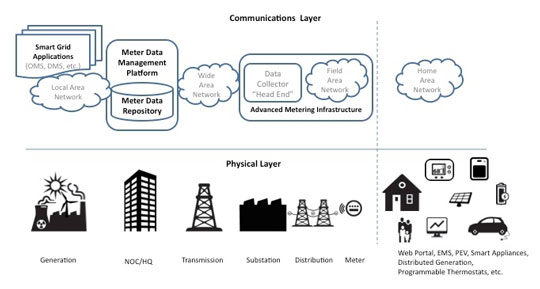As many of you know, I have a keen interest in the environment. (Don’t even get me started on the whole global warming (weirding) topic!) I’ve often written about corporate sustainability and am enjoying the work I’m doing with Honeywell on marketing their energy management solutions.
As many of you know, I have a keen interest in the environment. (Don’t even get me started on the whole global warming (weirding) topic!) I’ve often written about corporate sustainability and am enjoying the work I’m doing with Honeywell on marketing their energy management solutions.
In doing that work, and some work for one of my other clients, Verizon Business, I’ve been able to learn a lot about energy, including the new “smart grid.” With smart grid, energy distribution will be more of a two-way, with producers of all sorts selling energy through a new, open market. We’re starting to see this already as consumers who install solar panels can sell their excess energy back to their utility.
More importantly, communication between the energy provider and consumer will also be two-way. Information will be passed back and forth that will monitor usage, and can even instruct energy-consuming devices to reduce power or turn off when demand reaches critical peaks.
The amount of information that will be captured through new smart meters will be astounding. With meter readings every five minutes and some utilities storing as much as 36 months of data, we could be talking about exabytes of data, a million terabytes!
A new concept is born—meter data management (MDM). “MDM creates an opportunity for utilities to build intelligent applications across the enterprise, but they need to adopt modern system designs including service oriented architectures to do this,” says Chet Geschickter, a Smart Grid analyst at GTM Research.
You can be sure that some vendors have already anticipated the need to manage this large volume of data for analysis and reporting. Both SAP and Oracle have entered the space and are really the only BI players in the top 11 according to the new GTM Research report. As BI vendors look for the next “killer app,” this is one to consider, as it’s a natural problem for business intelligence to solve, especially since the market is predicted to grow 300% by 2014.






